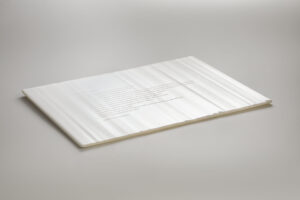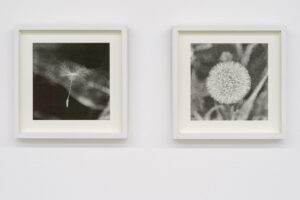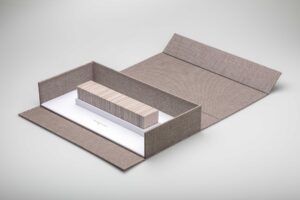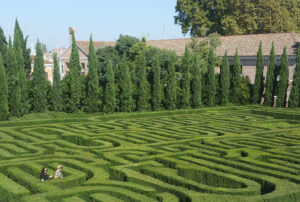Marcela Cernadas is an Argentine artist, born in Campana in 1967, who currently lives and works between Spain and Italy. Some of the most important institutions in which she has exhibited include Centre Pompidou in Paris, Museo Reina Sofía in Madrid, Matadero in Madrid, Joan Miró Foundation in Barcelona, Frauenmuseum (Women’s Museum) in Bonn, Galata Museo del Mare in Genoa, MACRO in Rome, Fondazione Cini and La Biennale di Venezia.

Marcela Cernadas, ph Salvador Soriano, courtesy Studio Marcela Cernadas
Paola Natalia Pepa: Your collaboration with renowned galleries (Michela Rizzo Gallery, Studio La Città) and Italian institutions (Rubelli tessuti, Macro in Rome, Fondazione Musei Civici in Venice) now has a lasting history. What memories, among the many, do you carry with you as the most important ones in your career?
Marcela Cernadas: Perhaps those of the great moments of trust they gave me. For example, when I was still a student, the gallerist Hélène de Franchis (Studio La Città) brought my work to Art Basel and sold it to a museum, or when the gallerist Michela Rizzo took charge of the production of Velamina, the site-specific installation in the church of San Salvador in Venice, or again, when the curator Macu Morán exhibited one of my works at Centre Pompidou. There are also many amusing anecdotes I remember, such as when I involved the Mayor of Campana (and my whole family!) to create a projection on the town’s main historic monument, exposing a very expensive projector to the elements and improvising a screen with kitchen film on the facade… Mapping didn’t exist then! I am moved even now when I think about that.

Marcela Cernadas, Manifesto di sabbia, 2023, ph Francesco Allegretto, courtesy Studio Marcela Cernadas
In 2022 you were named the winner of the tenth edition of the Glass in Venice Prize, promoted by the Veneto Institute of Science, Letters and Arts and Fondazione Musei Civici di Venezia to enhance the art of glassmaking internationally. What led you as an artist to the choice of glass and how was your approach to this material?
The encounter was direct. I received a commission from the Patriarchate of Venice to execute a work in glass and from there, I slowly understood that because of its original function of “looking through,” the transparency of glass adapts to the questions of poetic meaning implicit in my work. In addition, the sober and inexorable metamorphosis of this material brings me very naturally closer to the metaphysical subject matter.

Marcela Cernadas, Ode to the brief, 2022, ph Sergio Martucci, courtesy Studio Marcela Cernadas (BELLO MONDO, Galleria Michela Rizzo, Venice, July 9 – September 10, 2022)
Currently, in Venice, you are featured in a major exhibition at the Giorgio Cini Foundation’s Glass Study Center, entitled “Sand Manifesto”. What would you like to tell us about this participation?
Manifesto of Sand (“Manifesto di Sabbia”) was born from an intuition I had last winter during a study trip at the Cini Foundation. In that extraordinarily dense context, I was guided inside the archives of the Glass Study Center by Marzia Scalon, curator of the exhibition, who invited me to create an exhibition in the Messina Room. Since then, I have spent that stay and subsequent ones on the island of San Giorgio, devoting myself to the project that is giving me much satisfaction. The exhibition consists of a body of works, all previously unpublished, that confront the artist’s enterprise of giving coherence to the primal incoherence of sand. I started with the 1975 short story “El libro de arena” by Jorge Luis Borges and then ranged over paper and glass works that are a depiction of a writing-drawing that has no beginning and no end. The epiphanic moment of the work took place when I was able to draft the text of the poster and have it silkscreened with an ink specially prepared for a sand-colored paper and, for the occasion, to have it chiseled on a page made of Murano glass, a metaphor for a seabed that could change toward every beginning and every end.

Marcela Cernadas, Scatola per Manifesto di sabbia, 2023, courtesy Studio Marcela Cernadas
At a time when many are opting to stand out with striking actions and eccentric, anthropocentric works, your creations are denoted by the refinement of the aesthetic choice and the delicacy of the artist’s delivery of the message. For the gaze that starts from the soul and projects outward, life, Nature, the Infinite. A sensitivity that in its suave gestures nevertheless does not lose communicative power….
Being noticed is something over which we cannot have control. I think the artist’s efforts must focus on authenticity and consistency with his/her own thought. It does not matter much if this thought coincides with the prevailing choruses of the various moments or the complex geography of art. A path made following one’s own times and convictions becomes limpid, and in this case it gains weight.

Labirinto Borges, Fondazione Cini, 2023, ph Salvador Soriano, courtesy Studio Marcela Cernadas
In your artistic research several times connotations emerge that refer back to Argentine authors, originating from your native country: from the reference of Julio Cortázar’s Rayuela (The Game of the World) in the work presented for La Biennale di Venezia in 2003, to the current exhibition “Manifesto di Sabbia”, whose title pays homage to the short story The Book of Sand by Jorge Luis Borges, an Argentine author to whom the labyrinth placed next to the new Glass Study Center on the Island of San Giorgio in Venice is also dedicated. Are these references that emerge spontaneously and/or that you voluntarily carry with you as a legacy of your past?
I am sure they are embedded in my imagination and emerge spontaneously when they resonate with the creative act. The authors you mention have been permeable travelers to the various cultures they have studied and loved; at the same time, they have delved into their own origins by consolidating writing in “Argentine” and as a result have achieved a universal voice. I have simplified a great deal and I continue by telling you that I recognize myself in their adventures and assumptions. I also recognize myself in the living labyrinth of St. George’s island that I am afraid to enter. I ventured partially, and with Marzia, for the sheer vanity of having a photograph!
Info:
Marcela Cernadas. Manifesto di Sabbia
11.09 – 21.12.2023
Centro Studi del Vetro della Fondazione Giorgio Cini
Isola di San Giorgio, Venezia
Hours: Monday to Friday, from 10am to 1.30pm and from 2.30pm to 5pm (reservations required at centrostudivetro@cini.it)
Independent curator specialized in Argentine art, with studies and publications on the subject (“Argentina at the Venice Biennale of Art” in Storie della Biennale di Venezia, Ed. Ca’ Foscari, 2020), founder in 2014 of arteargentina.it, the first Italian platform dedicated to Argentine art in Italy. She currently collaborates in Venice with galleries and artists.






NO COMMENT